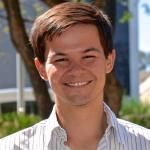Group A, Poster #171, Fault and Rupture Mechanics (FARM)
Community Code Verification Exercises for Simulations of Sequences of Earthquakes and Aseismic Slip (SEAS): From 3D, Full Elastodynamics and Dipping Faults to Fluids and Fault Friction Evolution
Poster Image:

Poster Presentation
2022 SCEC Annual Meeting, Poster #171, SCEC Contribution #12532 VIEW PDF
sidering earthquake sequences on rate-and-state faults with full inertial effects (BP1-FD), models with 1D dipping faults (BP3-QD), and 3D models of quasi-dynamic earthquake sequences (BP4/BP5-QD) (Erickson et al., 2020, SRL; Jiang et al., 2022, JGR). We find that simulated short- and long-term fault processes, including recurrence intervals, surface displacements, and earthquake statistics, are sensitive to numerical factors, notably resolution and computational domain size. Codes for BP1-FD implement different criteria for switching between quasi-static and dynamic solvers, which require tuning to obtain matching results, where fully dynamic events exhibit larger slip rates and rupture speeds compared with the quasi-dynamic counterpart. For BP3-QD, dip angle and sense of motion (thrust versus normal faulting) alter event patterns and ground motion on the hanging and foot walls. For BP4/BP5-QD, we find that, despite sensitivity to numerical factors, rupture style, duration, slip, and stress drop of earthquakes are comparable among even marginally resolved simulations.
Our upcoming benchmarks focus on aseismic processes and earthquake nucleation, with two new physical ingredients: (1) changes in effective normal stress and pore fluid pressure from fluid injection and diffusion and (2) different fault friction evolution laws. We aim to explore how numerical factors, such as methods for time-stepping and switching between quasi-static and dynamic solvers, affect the simulated interactions between aseismic and seismic processes, and changes in pore fluid pressure. These community exercises will guide the development of more realistic SEAS models and their integration with geophysical observations, contributing to a better understanding of earthquake system dynamics.
SHOW MORE
Our upcoming benchmarks focus on aseismic processes and earthquake nucleation, with two new physical ingredients: (1) changes in effective normal stress and pore fluid pressure from fluid injection and diffusion and (2) different fault friction evolution laws. We aim to explore how numerical factors, such as methods for time-stepping and switching between quasi-static and dynamic solvers, affect the simulated interactions between aseismic and seismic processes, and changes in pore fluid pressure. These community exercises will guide the development of more realistic SEAS models and their integration with geophysical observations, contributing to a better understanding of earthquake system dynamics.
SHOW MORE










































































.jpg?OF5elAWpQSIowQvbwvvth3Yr6JSY5zsa&itok=sNRCSx8X)




